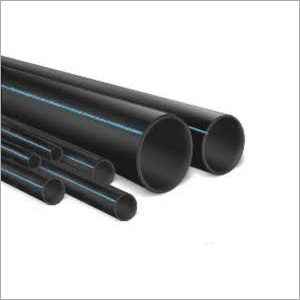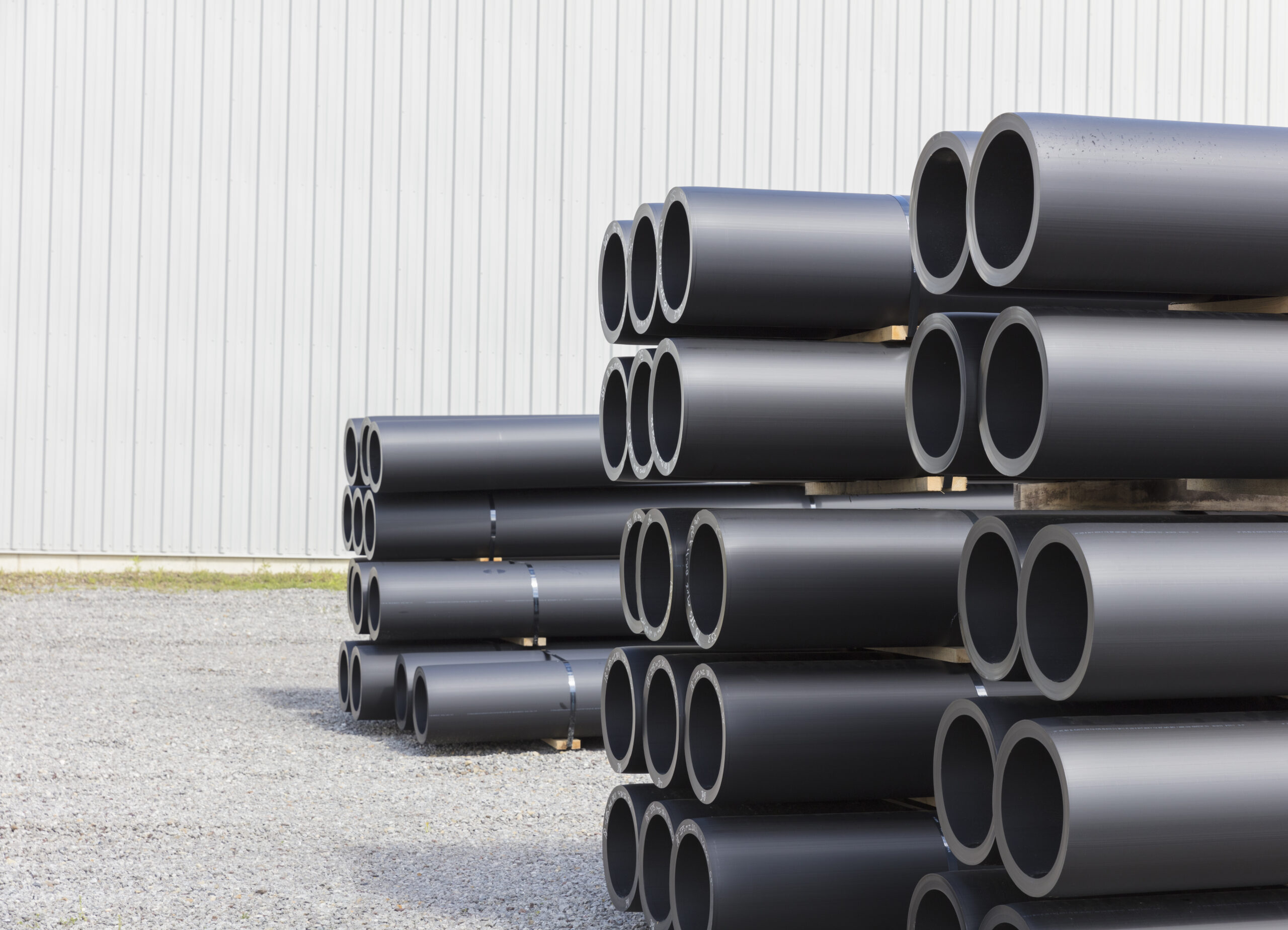Pipe Manufacturing Midland TX: Process Explained
Wiki Article
Check Out the Manufacturing Refine Behind High-Quality HDPE Pipe and Its Applications
The manufacturing procedure of high-quality HDPE pipes is complex and methodical. It starts with the option of basic materials that boost performance. Following this, ethylene goes through polymerization to develop resin, which is after that shaped with extrusion. Quality control is vital, ensuring that the last item fulfills rigorous criteria. The trip of HDPE pipelines doesn't end with production. Their applications across numerous industries expose a more comprehensive value worth taking a look at.Comprehending HDPE: Qualities and Advantages

High-density polyethylene (HDPE) is a flexible thermoplastic known for its sturdiness and resistance to numerous environmental variables. This material shows superb tensile strength, making it appropriate for demanding applications. Its low-density framework adds to a lightweight item, promoting convenience of handling and installment. HDPE additionally showcases amazing resistance to chemicals, which decreases degradation when subjected to harsh substances.
The product's reduced dampness absorption further improves its long life, making it perfect for use in pipelines and tank. Additionally, HDPE is immune to ultraviolet (UV) radiation, making certain that products keep their stability also when revealed to sunshine. In addition, its adaptability enables the development of detailed forms without endangering strength. The green nature of HDPE, often stemmed from recycled materials, contributes to its appeal, promoting lasting methods in production. In general, these residential or commercial properties and advantages make HDPE a preferred choice for numerous commercial and customer applications.
Raw Material Selection for HDPE Production
The choice of resources for HDPE manufacturing is vital to validate the final product satisfies the desired requirements and high quality requirements. High-density polyethylene (HDPE) is mainly produced from polymerized ethylene, originated from nonrenewable fuel sources such as gas or unrefined oil. The quality of these feedstocks greatly influences the mechanical and thermal residential properties of the final HDPE.Additives additionally play a considerable duty in enhancing HDPE's performance, including antioxidants, UV stabilizers, and colorants, which enhance resilience and resistance to ecological variables. The option procedure have to consider not just the chemical composition of the raw products however likewise their handling characteristics to guarantee effective manufacturing.
The sourcing of raw materials need to focus on sustainability and conformity with environmental laws, as accountable practices are crucial in today's market. Ultimately, careful basic material choice lays the foundation for producing top quality HDPE pipes ideal for varied applications.
The Extrusion Process: Shaping HDPE Pipe
The extrusion procedure plays a crucial function fit HDPE pipes, beginning with meticulous material preparation methods that guarantee perfect flow and consistency. Equally vital is the design of the die, which straight influences the last measurements and surface top quality of the pipeline. With each other, these elements add significantly to the effectiveness and top quality of HDPE pipeline manufacturing.Product Prep Work Methods
Reliable manufacturing of HDPE pipes starts with meticulous product preparation methods, specifically the extrusion procedure. During this stage, high-density polyethylene material is very first dried to remove dampness, ensuring suitable circulation qualities. The resin is after that fed right into the extruder, where it goes through heating and melting, changing right into a thick state. This home heating procedure is carefully managed to keep the product's stability and performance. The liquified HDPE is compelled via a die, shaping it right into a constant pipe form. Appropriate temperature administration throughout extrusion is vital, as it straight influences the product's buildings and the end product quality. When shaped, the HDPE pipe is cooled and reduced to specified lengths, ready for subsequent processing and applications.Die Style Relevance
Precision in die style plays a necessary role in the extrusion process of HDPE pipes. The die offers as the last shaping tool, straight influencing the pipe's measurements, wall thickness, and surface coating. A properly designed die guarantees uniform material flow, reducing problems such as irregularities and weak points. The geometry of the die need to be maximized to suit the details residential properties of HDPE, including its viscosity and thermal actions during extrusion. Furthermore, the cooling rate of the material as it goes through the die can substantially impact the pipe's architectural stability. Spending in advanced die technology is essential for producers intending to produce top notch HDPE pipes that meet market criteria and client assumptions.High Quality Control Steps in HDPE Manufacturing
Although various elements influence the quality of HDPE pipeline manufacturing, efficient quality assurance procedures are important to guarantee uniformity and dependability in the end product. sump pump discharge line underground clogged Key quality control techniques include extensive material inspection, confirming that the raw polyethylene meets well-known criteria for pureness and thickness. During the extrusion procedure, parameters such as temperature level, pressure, and cooling time are closely checked to preserve dimensional precision and structural honestyIn enhancement, post-production testing is necessary; suppliers usually carry out hydrostatic examinations to assess the pipeline's stamina and resistance to pressure. Visual evaluations for surface problems additionally enhance quality control. Qualification from relevant criteria organizations, like ASTM or ISO, supplies an added layer of reputation. By implementing these extensive high quality control procedures, producers can decrease problems, improve performance, and ensure that the HDPE pipelines fulfill the specific demands of various applications, ultimately bring about client satisfaction and count on in the item.
Applications of HDPE Pipeline Throughout Industries
HDPE pipes are utilized across various fields as a result of their durability and convenience. In water distribution systems, they assure effective distribution, while in wastewater management, they offer reliable solutions for waste transportation. Additionally, agricultural watering networks profit from HDPE's resistance to corrosion and adaptability, making it an ideal option for modern farming practices.
Water Distribution Solutions
A significant variety of markets rely upon high-density polyethylene (HDPE) pipelines for reliable water distribution systems. Known for their longevity and resistance to deterioration, HDPE pipelines are commonly made use of in local water system networks, agricultural irrigation, and industrial applications. Their light-weight nature promotes easy handling and installment, decreasing labor prices and time. Additionally, HDPE pipes can fit various pressure degrees, making them appropriate for both reduced and high-pressure systems. hdpe pipe in stock Midland TX. The versatility of the product enables for seamless assimilation into existing facilities, decreasing the need for comprehensive excavation. HDPE's resistance to chemical seeping guarantees that the water supplied remains safe and clean, making it a suitable selection for maintaining the high quality of potable water throughout different sectors.Wastewater Management Solutions
Efficient water distribution systems also lead the means for cutting-edge wastewater monitoring solutions, where high-density polyethylene (HDPE) pipes play a considerable duty. Popular for their durability and resistance to deterioration, HDPE pipes are perfect for carrying wastewater in numerous setups. Their versatility enables very easy setup in complicated atmospheres, decreasing the need for substantial excavation. Additionally, HDPE's smooth interior surface decreases rubbing, improving flow prices and effectiveness. These pipelines are likewise resistant to chemical leaching, making sure that impurities do not endanger the surrounding atmosphere. Industries, municipalities, and therapy centers progressively count on HDPE pipelines for their dependability and long life, making them a preferred choice for modern-day wastewater management systems. This versatility highlights the vital value of HDPE pipes across many applications.Agricultural Watering Networks
Agricultural watering networks benefit greatly from making use of high-density polyethylene (HDPE) pipelines, which offer reliable and trustworthy water distribution to crops. HDPE pipelines are light-weight, making them easy to transfer and mount, while their versatility permits various setups in varied surfaces. These pipes demonstrate superb resistance to deterioration, chemicals, and UV radiation, making certain durability in extreme farming settings. Additionally, their visit this site right here smooth indoor surface area minimizes rubbing loss, enhancing water flow and minimizing energy costs linked with pumping. The durability of HDPE pipelines, frequently exceeding 50 years, contributes to decrease upkeep and substitute costs. As a result, farmers progressively depend on HDPE pipelines to improve irrigation efficiency and advertise lasting agricultural methods, eventually resulting in boosted crop yields and resource conservation.Future Trends in HDPE Pipe Technology
As the demand for sustainable and effective infrastructure expands, improvements in HDPE pipeline technology are positioned to transform numerous industries. Arising patterns consist of the assimilation of clever modern technologies, such as sensing units and IoT capabilities, which assist in real-time monitoring of pipeline problems, minimizing maintenance costs and stopping leaks. Furthermore, the growth of innovative manufacturing methods, such as 3D printing, is making it possible for the manufacturing of complicated, personalized pipe styles that cater to specific job requirements.The emphasis on recycling and circular economic situation methods is driving the innovation of HDPE pipelines made from recycled products, improving sustainability. Enhanced jointing methods, such as electro-fusion and mechanical fittings, are also boosting installation performance and reliability. The expanding emphasis on environmental laws is pushing makers to adopt greener manufacturing procedures, making sure that HDPE pipelines not only satisfy industry requirements but likewise cultivate a more lasting future for framework advancement.
Regularly Asked Questions
Just How Does HDPE Contrast to Other Plastic Materials?
HDPE outshines many various other plastic products pertaining to longevity, chemical resistance, and flexibility. Its low thickness and high tensile toughness make it perfect for numerous applications, frequently surpassing choices in both performance and long life.What Are the Environmental Effects of HDPE Production?
The ecological influences of HDPE production consist of greenhouse gas emissions, energy intake, and potential contamination from making processes. Furthermore, inappropriate disposal can lead to dirt and water contamination, elevating worries concerning lasting ecological effects.Can HDPE Pipeline Be Recycled?
Yes, HDPE pipelines can be reused. Several facilities accept utilized HDPE for processing, changing it right into brand-new items. This recycling contributes try this to sustainability efforts, decreasing plastic waste while conserving resources and power in the manufacturing cycle.What Is the Life-span of HDPE Pipes?

Exactly How Do Temperature Variations Affect HDPE Pipeline Efficiency?
Temperature level variations substantially impact HDPE pipeline efficiency, impacting adaptability and toughness. Heats can result in softening, while reduced temperature levels might trigger brittleness, inevitably influencing the pipeline's toughness and suitability for different applications in diverse settings.Report this wiki page